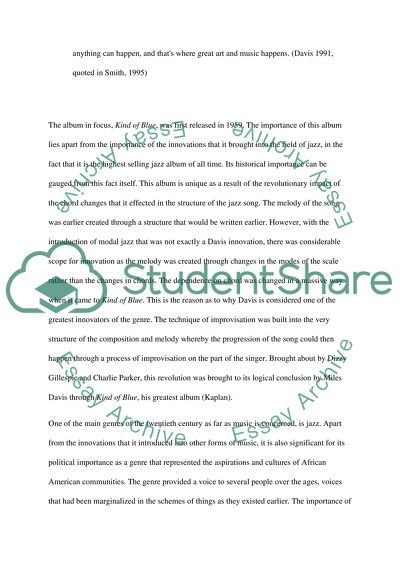Cite this document
(“Miles Davis and Kind of Blue Essay Example | Topics and Well Written Essays - 2500 words”, n.d.)
Retrieved from https://studentshare.org/music/1460079-miles-davis-and-kind-of-blue
Retrieved from https://studentshare.org/music/1460079-miles-davis-and-kind-of-blue
(Miles Davis and Kind of Blue Essay Example | Topics and Well Written Essays - 2500 Words)
https://studentshare.org/music/1460079-miles-davis-and-kind-of-blue.
https://studentshare.org/music/1460079-miles-davis-and-kind-of-blue.
“Miles Davis and Kind of Blue Essay Example | Topics and Well Written Essays - 2500 Words”, n.d. https://studentshare.org/music/1460079-miles-davis-and-kind-of-blue.


